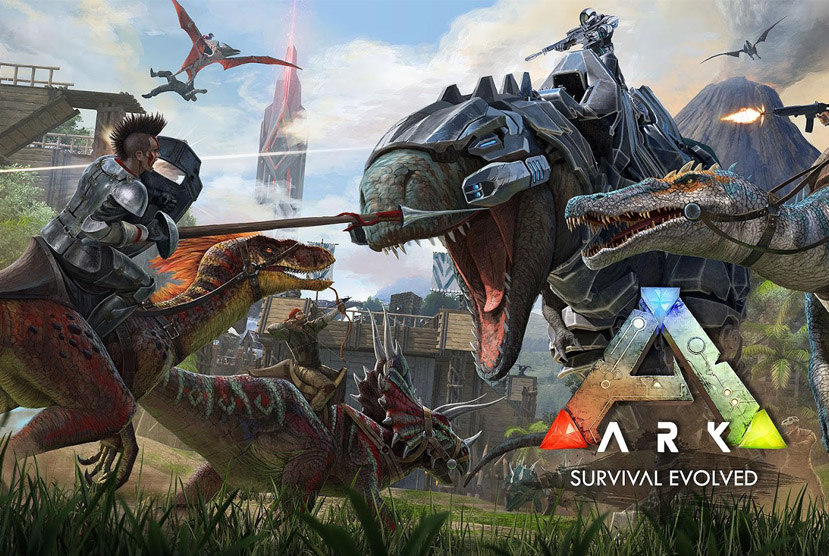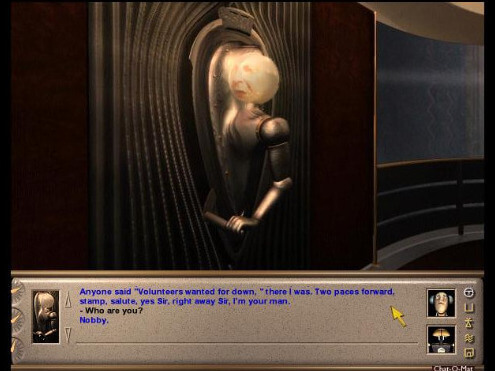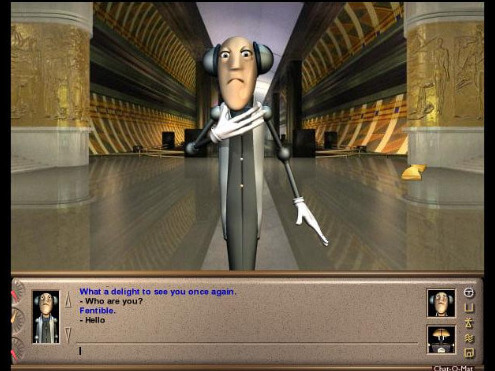- The Official Website for Douglas Adams' Starship Titanic - An incredible new adventure game for PC CD-ROM.
- Jul 21, 2019 Starship Titanic - Starship Titanic Patch 1.00.42c - Game mod - Download. The file Starship Titanic Patch 1.00.42c is a modification for Starship Titanic, a(n) adventure game. Download for free. File type Game mod. File size 290.6 KB. Last update Sunday, July 21, 2019. Downloads (7 days) 1.
What makes all this truly disappointing is the game's pedigree: Starship Titanic is the brainchild of Douglas Adams, whose book A Hitchhiker's Guide to the Galaxy has all the qualities - interesting characters, wacky situations, and humor that manages to be simultaneously bizarre and subtle - that could have saved this game from sinking into.
Though difficult and not always intuitive, Starship Titanic wins through sheer style.
Starship Titanic Game
Calling Titanic ‘a little quirky’ is a misnomer, as you might judge after visiting the art gallery.
Ever notice how starship design either lingers towards an Enterprise-ish sort of look (sleek, smooth with pastel-colored plastics) or the Nostromo (dark, foreboding, with lots of chains and flickering lights)? It’s a sort of creative deadlock in science fiction that’s as common as high fantasy in computer role-playing games. Wouldn’t you want something with a little more class and ingenuity? Enter the Starship Titanic, a gigantic luxury starliner, as she embarks on her maiden voyage across the galaxy. The ship is of the ‘can’t possible go wrong’ variety, and so it invariably does go wrong – very wrong, in fact, as it comes crashing down unto your humble abode after suffering a catastrophic AI malfunction.
A Challenging Stellar Adventure
Starship Titanic, a work conceived by the late Douglas Adams (and put in novel form by Monty Python’s Terry Jones – make sure you buy the book), was touted as a groundbreaking soon-to-be adventure during its conceptual phases – the ultimate marriage of graphics and an interactive conversation engine meant to revitalize the adventure genre. To some extent it succeeds, especially on the visual side of things – when you enter the game you immediately notice how superbly detailed everything looks, immersed in a style of art deco to give it that 1930’s luxury feel (according to the creators, there’s also a hint of the Chrysler building and Ancient Egypt in there as well). The lobby area (known as the ‘Well’) has a spectacular inside view of the spacecraft, and then there’s the Arboretum that allows you to toggle through four breathtakingly beautiful seasonal animations. The bots are cleverly designed and Titania’s rebirth is spectacular.
Yet some problems soon arise as you start playing Navigation and in some cases object manipulation is fairly cumbersome. First is the node-to-node scrolling engine which often leave you faced with an “I can’t get there from here” feeling. You see an object, or some stairs, and have to struggle (until the millionth time when you’ve got the path memorized) with how to turn-step-turn in order to be facing in the proper direction. Further hampering navigation are the long elevator rides that you must sit through when traveling between floors, which, although awesome at first, get tiresome fast. Finally, working ingame devices (which is different from handling inventory items) requires that you drill through several layers of menus each time.

You are not supplied with much backstory, but this is a far more puzzle-based than story-based experience…not necessarily a bad thing. And the puzzles themselves are a mixed bag, some unintuitive, some inspired, and some downright maddening. This isn’t an easy adventure by any stretch, and neither is it immune to failure should you handle the puzzles in an incorrect order. Clues are sometimes spoken once and never emphasized.

Titanic’s onboard postage has its advantages. Adams himself provides the voice for …uhm him.
The text parser, which you won’t have to make callous use of considering how few bots there are to talk to, is functional but limited in the amount of words it can work with. Still, it’s the dialogue where Adams’ style truly comes through, and it’s downright hilarious most of the time. He himself voices the Succ-U-Bus, a vile, omnipresent creature with an unnatural lust for chicken, used to transport items between locations. Less entertaining and more annoying is the parrot, voiced by Terry Jones.
Loyal Adams fans will want to play this game, regardless of its problems, because it is certainly imbued with his style. It’s an overall skilfully crafted pseudo 3D experience if you’re up to the challenging and occasionally maddening puzzles.

System Requirements: 133 Mhz CPU, 16 MB RAM, 160 MB HDD, Windows 95/98
Starship Titanic Windows 10
Please READ THIS before downloading!
Starship Titanic Video Game Cheats
- Buy Game:
www.amazon.com - Official Website:
www.starshiptitanic.com